Reader advisory: this review contains spoilers. If in doubt, do not read beyond the warning midway.
The Red Turtle is a milestone in the history of Studio Ghibli, Japan’s most famous animation studio, in that it marks their first international co-production. Helming The Red Turtle is Dutch director Michael Dudok de Wit, a name I was previously unfamiliar with. Looking up his other work, it’s clear there’s obvious precedent to the rather timeless themes of The Red Turtle in his Oscar-nominated short film, Father and Daughter. While there’s no denying the hugely impressive animation work of The Red Turtle, and the near-universal appeal of its almost parable-like narrative, there was something just that little bit not quite right about the film to completely, truly captivate me.
A man is near-drowning in a storm, and washes up on the shore of a deserted island. He finds creatures and sustenance but resolves to try to make his way home. His attempts are thwarted by a giant turtle that keeps breaking his raft. The man lashes out in anger at the turtle, frustrated that he’s trapped. Later, a woman emerges from the sea. The couple lives out their lives on the island, through good times and bad, growing old together.
 While I’m not entirely sure I found The Red Turtle to be wholly satisfying experience, there’s no denying the absolutely stunning beauty of its animation. The opening sequence is really arresting, the enormity of the sea raging around the tiny body of the man is quite riveting and effective. On the island itself, the richness of the environment is rendered believable without ever becoming reliant on photo-realism. The humans are animated very simply, and it’s phenomenal to see the depth of emotion expressed in such simple character design, particularly as the film is dialogue-free and completely reliant on the strength of its animation to get the audience on-side. Assisting this is a very sweet score from French composer Laurent Perez del Mar.
While I’m not entirely sure I found The Red Turtle to be wholly satisfying experience, there’s no denying the absolutely stunning beauty of its animation. The opening sequence is really arresting, the enormity of the sea raging around the tiny body of the man is quite riveting and effective. On the island itself, the richness of the environment is rendered believable without ever becoming reliant on photo-realism. The humans are animated very simply, and it’s phenomenal to see the depth of emotion expressed in such simple character design, particularly as the film is dialogue-free and completely reliant on the strength of its animation to get the audience on-side. Assisting this is a very sweet score from French composer Laurent Perez del Mar.
So why, then, did this beautifully-realised, seemingly universal story leave me cold? It’s hard to explain without detailing too much of the plot, but, in short, my own take on how the narrative played out relied a little too much on the exploitation of both nature and the feminine in order to tell its ‘universal’ story of a – default male – human. Now, I am well aware that this stems from my interpretation of the film. This is not by any means necessarily there in the film, but, just as so many others seem to have been totally enamoured by it, I can’t deny my own response. So, with a warning for spoilers – here’s what I saw in the story that left me confused and uncomfortable. The man is enraged by the turtle, and strikes out at it – seemingly killing it. The suggestion is that the turtle reincarnates as the woman. The man and the woman live their lives together, having a child, growing old, and eventually succumbing to time – when the woman returns to the sea as a turtle.
Now, forgive me if I’m being a bit too SJW here, but I just can’t find myself won over by a narrative which sees a man’s journey to not being a short-sighted, self-preserving destructive force requiring a woman who he has essentially just quite cruelly killed to hold his hand and teach him how not to be horrible. The only satisfying interpretation of what I watched was that nature in fact confined him to the island by providing the companionship of the woman, but honestly that just doesn’t fly in the context of the film. It could be I’m missing some subtlety or metaphor in the narrative. It could be that I got too hung up on the man’s cruelty early on to adequately read the rest of it. Perhaps it says more about me that the manner of the man’s forgiveness and rehabilitation over-shadows the essential kindness of nature as depicted in the film.
Despite my relative discomfort with the film’s narrative, I would still absolutely recommend The Red Turtle. It’s a visual feast, and it is an effective story, taken at face value. Taken more deeply, it’s certainly going to make you ponder, positively or negatively, the nature of humanity and the potential humanity of nature.
The Red Turtle is available now on DVD and Blu-ray from Studiocanal.
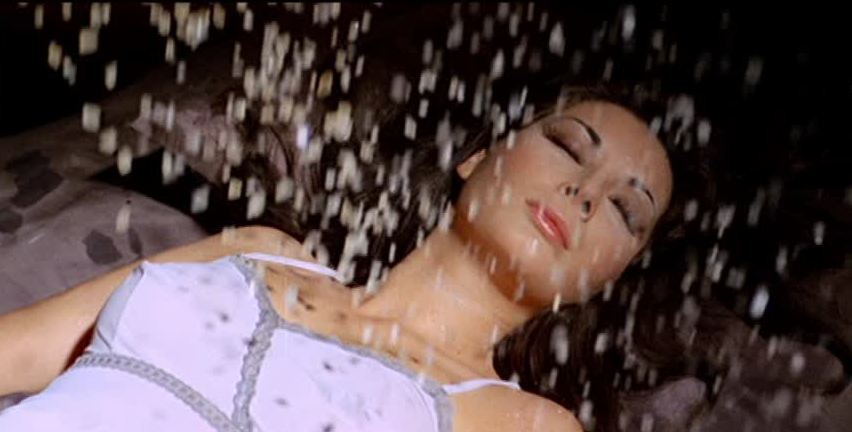 Fenech is, naturally, the star of the show here, but she’s ably supported by some very familiar faces of Italian genre cinema, with Hilton, Rassimov and de Mendoza making up her triumvirate of men. The soundtrack, too, is pure giallo, and it’s with some joy that I’ve been introduced to a composer I was previously entirely unfamiliar with, namely Nora Orlandi. Her score is perhaps subtle compared to the more familiar sounds of the subgenre, but nevertheless memorable. There are lengthy set pieces – both for murders and lovers – but I think by far my favourite segment of the film was the closing third, set in Sitges, which seemed to be an entire set-piece unto itself. Any misgivings I had about the earlier parts of the film were swiftly undone. If there’s still perhaps one thing lacking from the film that I would have liked to have seen more of, it would be a more thorough exploration of the titular vice – an apparent sexual quirk of our female lead which is only touched upon in flashback.
Fenech is, naturally, the star of the show here, but she’s ably supported by some very familiar faces of Italian genre cinema, with Hilton, Rassimov and de Mendoza making up her triumvirate of men. The soundtrack, too, is pure giallo, and it’s with some joy that I’ve been introduced to a composer I was previously entirely unfamiliar with, namely Nora Orlandi. Her score is perhaps subtle compared to the more familiar sounds of the subgenre, but nevertheless memorable. There are lengthy set pieces – both for murders and lovers – but I think by far my favourite segment of the film was the closing third, set in Sitges, which seemed to be an entire set-piece unto itself. Any misgivings I had about the earlier parts of the film were swiftly undone. If there’s still perhaps one thing lacking from the film that I would have liked to have seen more of, it would be a more thorough exploration of the titular vice – an apparent sexual quirk of our female lead which is only touched upon in flashback. As one might expect from a film of this era, there’s a wonderful use of expressionist imagery throughout, although to me it never seems to be a, strictly speaking, ‘German Expressionist Film’. That said, there are a number of powerhouses behind the scenes in addition to Lang, namely in the form of production designers Hermann Warm and Walter Röhrig, best known, I imagine, for The Cabinet of Dr. Caligari, among many, many other wonderful Expressionist films. There are some quite breath-taking moments of camera trickery involved, too, such as when death summons and vanishes a baby in his hands. The other marker of its era is the near-delightfully out-of-date depictions of other cultures – Persia and Ancient China in particular – that, if put on screen like this today would cause outcry of the first degree.
As one might expect from a film of this era, there’s a wonderful use of expressionist imagery throughout, although to me it never seems to be a, strictly speaking, ‘German Expressionist Film’. That said, there are a number of powerhouses behind the scenes in addition to Lang, namely in the form of production designers Hermann Warm and Walter Röhrig, best known, I imagine, for The Cabinet of Dr. Caligari, among many, many other wonderful Expressionist films. There are some quite breath-taking moments of camera trickery involved, too, such as when death summons and vanishes a baby in his hands. The other marker of its era is the near-delightfully out-of-date depictions of other cultures – Persia and Ancient China in particular – that, if put on screen like this today would cause outcry of the first degree.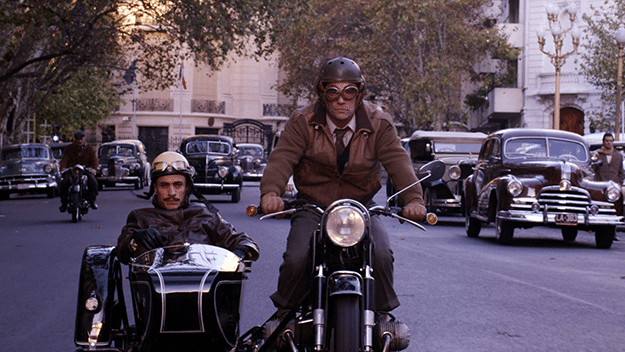
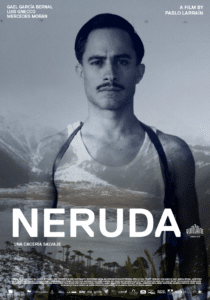 Much like Jackie, Neruda is not a traditional biopic, and instead takes a look at a brief snapshot of the subject’s life. While Jackie was particularly focused on a moment in the First Lady’s life, it was also particularly hazy and dream-like. That sense of dreaminess is manifest ten-fold in Neruda, with the year in the poet-politican’s life seeming more a fictional representation of what could have been than any attempt to reflect true, hard-and-fast facts. And for that I think the film is to be praised, in some ways, it is indeed enjoyably meandering. However, for the most part, I found my attention meandering too, and even thought the film has moments of humour, and moments of intrigue, it otherwise lacked any real engagement with its characters, for me. Now, whether that’s due to my complete ignorance in all things Neruda, I’m not sure, but considering Peluchonneau is a semi-fictionalised creation, I found his character to be much more engaging than that of Neruda (was that the point?).
Much like Jackie, Neruda is not a traditional biopic, and instead takes a look at a brief snapshot of the subject’s life. While Jackie was particularly focused on a moment in the First Lady’s life, it was also particularly hazy and dream-like. That sense of dreaminess is manifest ten-fold in Neruda, with the year in the poet-politican’s life seeming more a fictional representation of what could have been than any attempt to reflect true, hard-and-fast facts. And for that I think the film is to be praised, in some ways, it is indeed enjoyably meandering. However, for the most part, I found my attention meandering too, and even thought the film has moments of humour, and moments of intrigue, it otherwise lacked any real engagement with its characters, for me. Now, whether that’s due to my complete ignorance in all things Neruda, I’m not sure, but considering Peluchonneau is a semi-fictionalised creation, I found his character to be much more engaging than that of Neruda (was that the point?).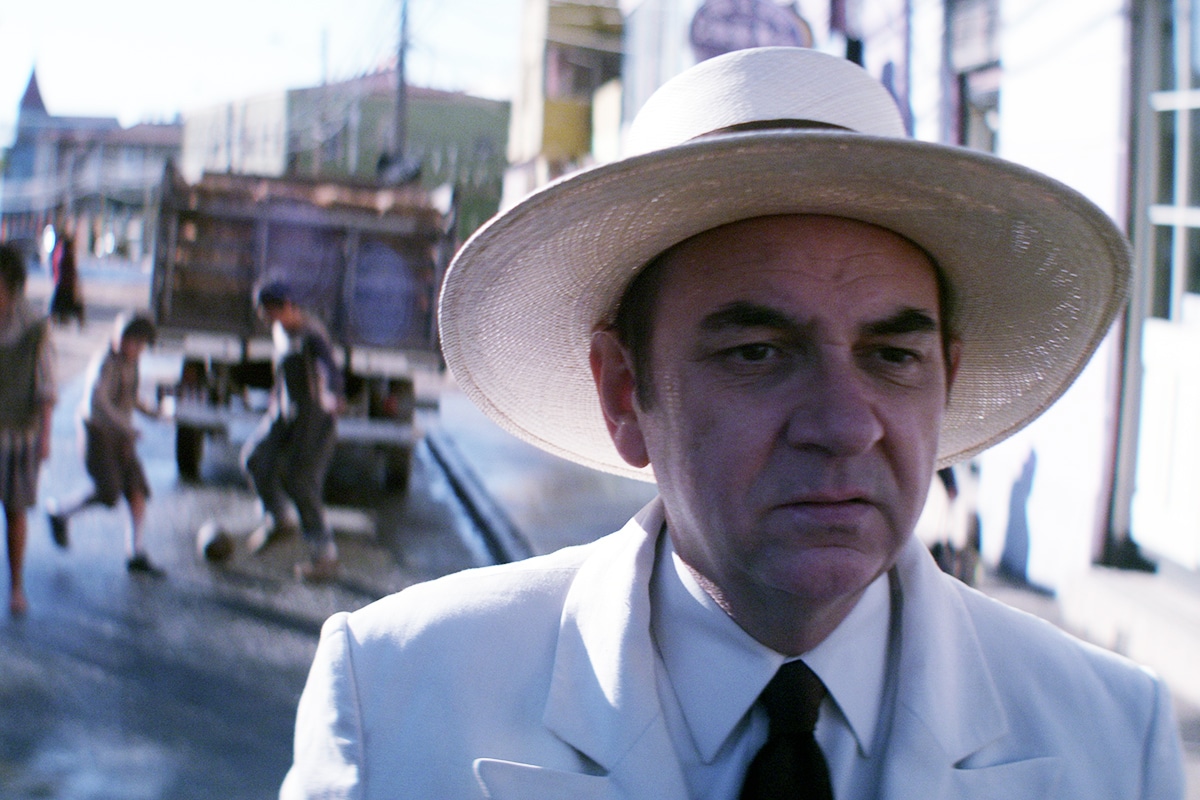 For me this was a film more about Peluchonneau than it was about Neruda, but I’m not confident enough to say that that’s not in fact a reflection on Neruda himself. It feels like a film I should re-watch, now that I have an ever-so slightly better understand of who Neruda was. Before seeing the film I didn’t even know that he was a politician, never mind someone who was on the run from the government he was once a part of. The film certainly isn’t an accurate introduction to the man in terms of historical fact, and neither does it aim to be so, but it does give a sense of the character: a champagne socialist in the truest form, it seems. More than anything, though, the film seems to use Neruda as a means to meditate on reputation and on art, and in that sense it’s very successful.
For me this was a film more about Peluchonneau than it was about Neruda, but I’m not confident enough to say that that’s not in fact a reflection on Neruda himself. It feels like a film I should re-watch, now that I have an ever-so slightly better understand of who Neruda was. Before seeing the film I didn’t even know that he was a politician, never mind someone who was on the run from the government he was once a part of. The film certainly isn’t an accurate introduction to the man in terms of historical fact, and neither does it aim to be so, but it does give a sense of the character: a champagne socialist in the truest form, it seems. More than anything, though, the film seems to use Neruda as a means to meditate on reputation and on art, and in that sense it’s very successful.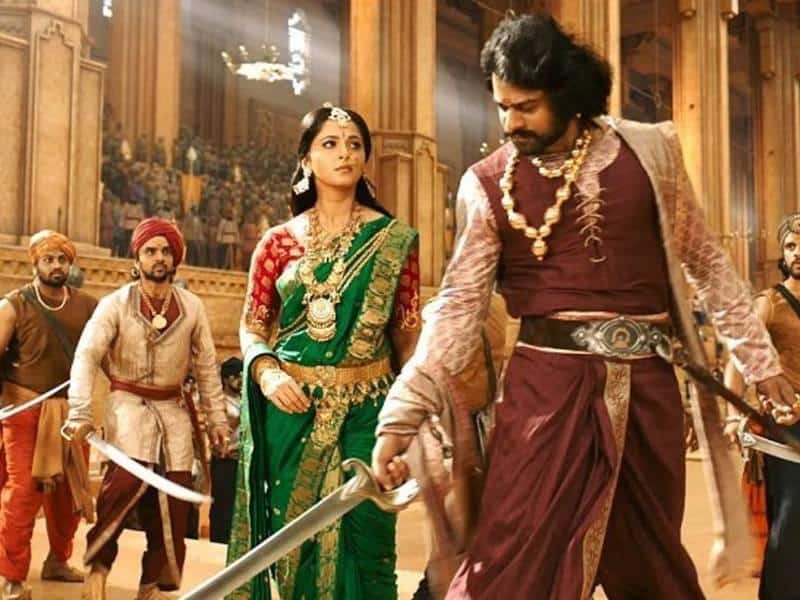 Consider this review to be from the perspective of a total newcomer to the franchise, the filmmaker, the stars and the industry. While Baahubali 2: The Conclusion is not the first big-budget Indian film I’ve ever seen, it’s been many years since I’ve seen any, and I’m almost certain I’ve never seen a South Indian production. Just to really underline my uninformed standpoint seeing this film, I’ve not even seen 2015’s Baahubali: The Beginning. Despite being a direct continuation of that film, Baahubali 2: The Conclusion was nevertheless relatively easy to follow, though no doubt there were narrative intricacies and details that flew right over my head at the time of watching.
Consider this review to be from the perspective of a total newcomer to the franchise, the filmmaker, the stars and the industry. While Baahubali 2: The Conclusion is not the first big-budget Indian film I’ve ever seen, it’s been many years since I’ve seen any, and I’m almost certain I’ve never seen a South Indian production. Just to really underline my uninformed standpoint seeing this film, I’ve not even seen 2015’s Baahubali: The Beginning. Despite being a direct continuation of that film, Baahubali 2: The Conclusion was nevertheless relatively easy to follow, though no doubt there were narrative intricacies and details that flew right over my head at the time of watching.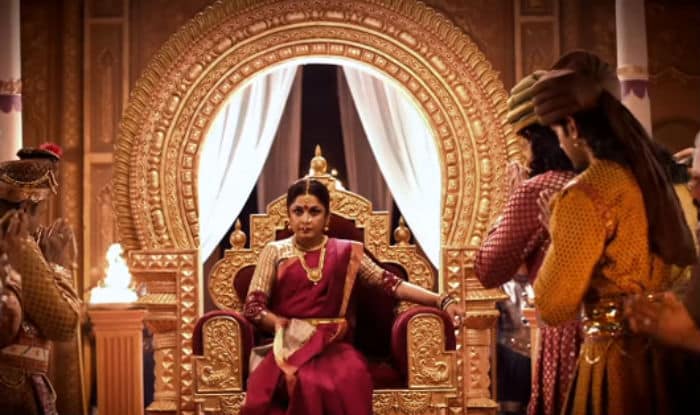 Alright, that’s the very short version of the plot synopsis. There are intricacies upon betrayals upon twists upon ‘who’s this, now?’ moments a-plenty (moreso if you’ve not seen the first film, naturally). I didn’t find the film particularly hard to follow, despite my limited prior knowledge of the characters. Even had the plot been more difficult to follow, I’m not sure I’d have minded much, because the story is entirely arch-melodrama, and a catalyst for spectacular action scenes. This is a near-three hour film, and yet it flies by in what feels like barely two – admittedly, maybe the mid-way intermission helped with this. The action starts from the very beginning, almost immediately launching into a spectacular introductory scene for Amarendra, wherein he soothes a rampant elephant. From therein it seems like every action sequence out does the last, leading into a climactic battle sequence which completely ups the ante into almost unbelievably giddy heights – I must have been gasping and laughing my way through the last 30 minutes of the film.
Alright, that’s the very short version of the plot synopsis. There are intricacies upon betrayals upon twists upon ‘who’s this, now?’ moments a-plenty (moreso if you’ve not seen the first film, naturally). I didn’t find the film particularly hard to follow, despite my limited prior knowledge of the characters. Even had the plot been more difficult to follow, I’m not sure I’d have minded much, because the story is entirely arch-melodrama, and a catalyst for spectacular action scenes. This is a near-three hour film, and yet it flies by in what feels like barely two – admittedly, maybe the mid-way intermission helped with this. The action starts from the very beginning, almost immediately launching into a spectacular introductory scene for Amarendra, wherein he soothes a rampant elephant. From therein it seems like every action sequence out does the last, leading into a climactic battle sequence which completely ups the ante into almost unbelievably giddy heights – I must have been gasping and laughing my way through the last 30 minutes of the film. The action is wonderfully testosterone-filled, and I think it’s been accurately described as a ‘pornography of masculinity’ by some writers. I think what, for me, saves it is how damn beefcake-y it all is. There’s an inherent element of camp to proceedings that makes the more problematic elements of the story seem less important. (I should note here I’ve read that there are far more problematic sequences in the first Baahubali, but having not seen that one I don’t really feel I can). There are female heroes in this film too, but primary amongst those, Devasena, is soon enough wooed by Amarendra and thus becomes a more traditional – if strong-willed – princess character. However, I think the women of the film (not that there are many) at least get to be important and strong in a non-warrior capacity too, even if they are ultimately subservient, under-mined or manipulated.
The action is wonderfully testosterone-filled, and I think it’s been accurately described as a ‘pornography of masculinity’ by some writers. I think what, for me, saves it is how damn beefcake-y it all is. There’s an inherent element of camp to proceedings that makes the more problematic elements of the story seem less important. (I should note here I’ve read that there are far more problematic sequences in the first Baahubali, but having not seen that one I don’t really feel I can). There are female heroes in this film too, but primary amongst those, Devasena, is soon enough wooed by Amarendra and thus becomes a more traditional – if strong-willed – princess character. However, I think the women of the film (not that there are many) at least get to be important and strong in a non-warrior capacity too, even if they are ultimately subservient, under-mined or manipulated.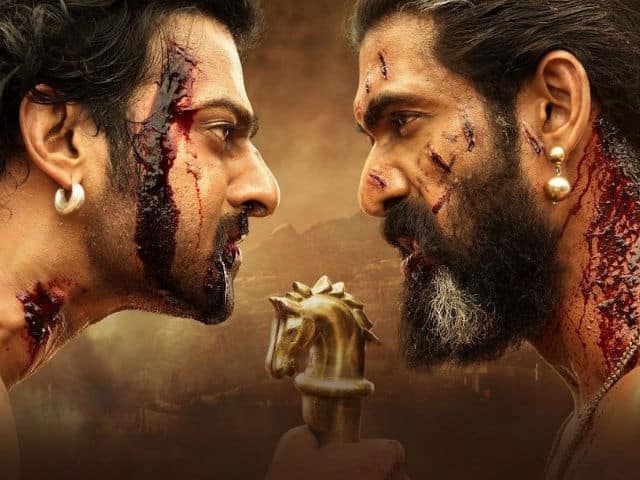 The performances in the film are impressive, physically, and there’s a certain endearing quality to lead actor Prabhas, who doesn’t seem to really be able to act, aside from looking a bit like a puppy – and he’s really quite hench, obviously. Shetty is wonderful as both young and older Devasena, and Bhallaladeva is a great hammy villain – though Dagubatti doesn’t chew the scenery as much as Nasser as his father, who puts panto villains to shame. These players all inhabit what is naturally a very CGI world, but it’s convincing. The film features a delightful disclaimer that action featuring animals made use of CGI and puppets, and frankly I’d rather see slightly dodgy CGI animals than worry that real animals were put anywhere near such remarkable scenarios. While some of the digital work is shonky, and the wirework is not always the smoothest, the action nevertheless is breath-taking.
The performances in the film are impressive, physically, and there’s a certain endearing quality to lead actor Prabhas, who doesn’t seem to really be able to act, aside from looking a bit like a puppy – and he’s really quite hench, obviously. Shetty is wonderful as both young and older Devasena, and Bhallaladeva is a great hammy villain – though Dagubatti doesn’t chew the scenery as much as Nasser as his father, who puts panto villains to shame. These players all inhabit what is naturally a very CGI world, but it’s convincing. The film features a delightful disclaimer that action featuring animals made use of CGI and puppets, and frankly I’d rather see slightly dodgy CGI animals than worry that real animals were put anywhere near such remarkable scenarios. While some of the digital work is shonky, and the wirework is not always the smoothest, the action nevertheless is breath-taking. Festival hit The Shepherd is a drama in the art-house mould that has received critical plaudits and yet has left me leaving quite cold. I suspect The Shepherd might make for a more interesting watch in a cinema setting, but watching it at home I mostly found myself very, very bored.
Festival hit The Shepherd is a drama in the art-house mould that has received critical plaudits and yet has left me leaving quite cold. I suspect The Shepherd might make for a more interesting watch in a cinema setting, but watching it at home I mostly found myself very, very bored. There is some really wonderful horror cinema coming out of Ireland at the moment, and it’s so pleasing to see genre works getting support from its film board. From Isolation through Wake Wood, The Canal, Citadel and Without Name, the range of horror filmmaking coming from Ireland is truly impressive. I think easily my favourite of this recent wave of films from the Emerald Isle is, appropriately, the Irish-Welsh co-production A Dark Song, a searing feature debut from writer-director Liam Gavin. Taking what might be the ritualistic set-piece from a number of different sub-genres and expanding it to be the main focus of the film, A Dark Song is an incredible meditation on life, death, morality and human nature.
There is some really wonderful horror cinema coming out of Ireland at the moment, and it’s so pleasing to see genre works getting support from its film board. From Isolation through Wake Wood, The Canal, Citadel and Without Name, the range of horror filmmaking coming from Ireland is truly impressive. I think easily my favourite of this recent wave of films from the Emerald Isle is, appropriately, the Irish-Welsh co-production A Dark Song, a searing feature debut from writer-director Liam Gavin. Taking what might be the ritualistic set-piece from a number of different sub-genres and expanding it to be the main focus of the film, A Dark Song is an incredible meditation on life, death, morality and human nature.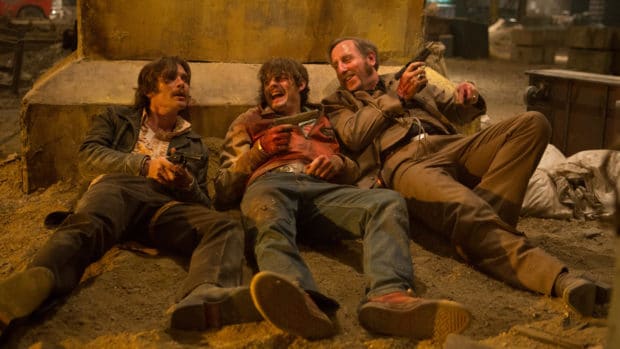 I don’t always get on much with Ben Wheatley’s films. Though I adore Sightseers, I found both Kill List and A Field in England underwhelming, and High Rise to be a mess, albeit an enjoyable one. Approaching Free Fire, then, I had an open mind but a sense of knowing what I might expect my own response to be, and it was indeed so. While I enjoyed the film well enough, it left me unsatisfied and wanting rather a lot more from it.
I don’t always get on much with Ben Wheatley’s films. Though I adore Sightseers, I found both Kill List and A Field in England underwhelming, and High Rise to be a mess, albeit an enjoyable one. Approaching Free Fire, then, I had an open mind but a sense of knowing what I might expect my own response to be, and it was indeed so. While I enjoyed the film well enough, it left me unsatisfied and wanting rather a lot more from it.